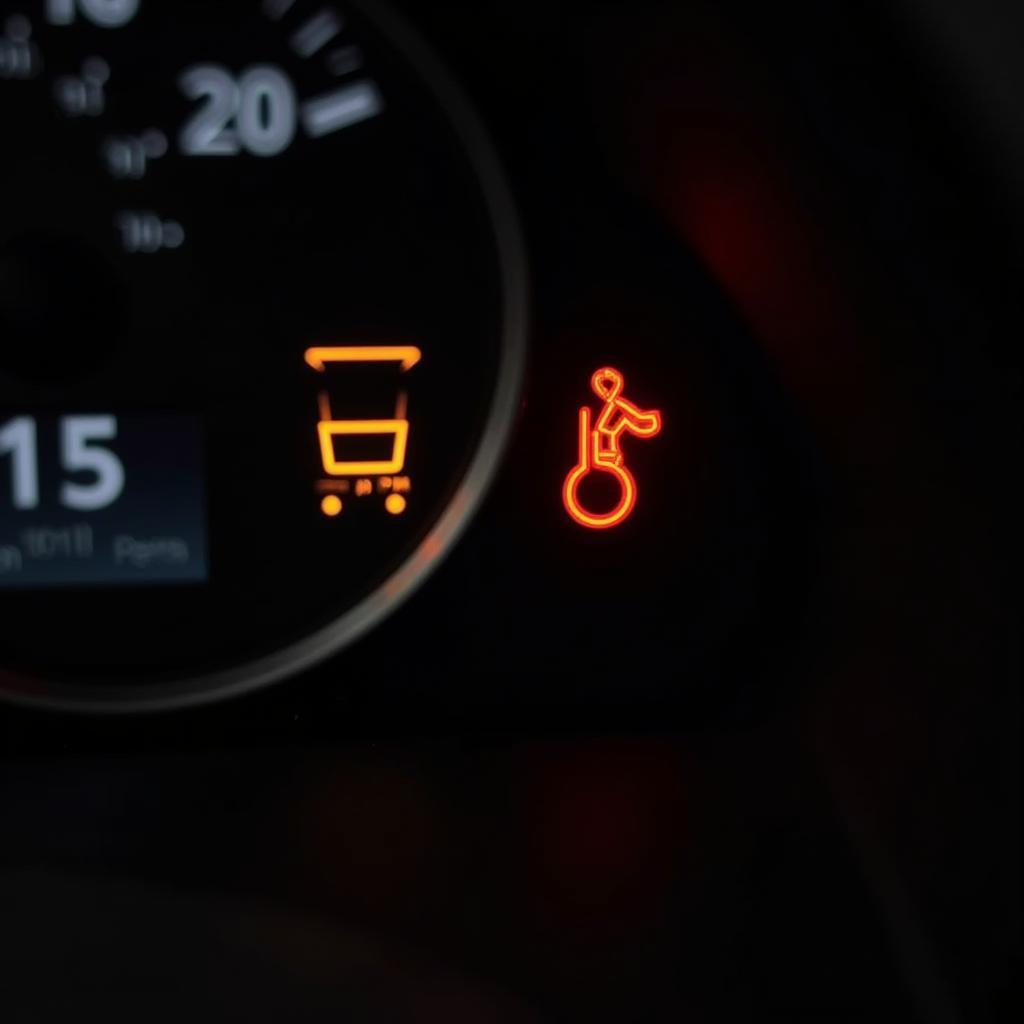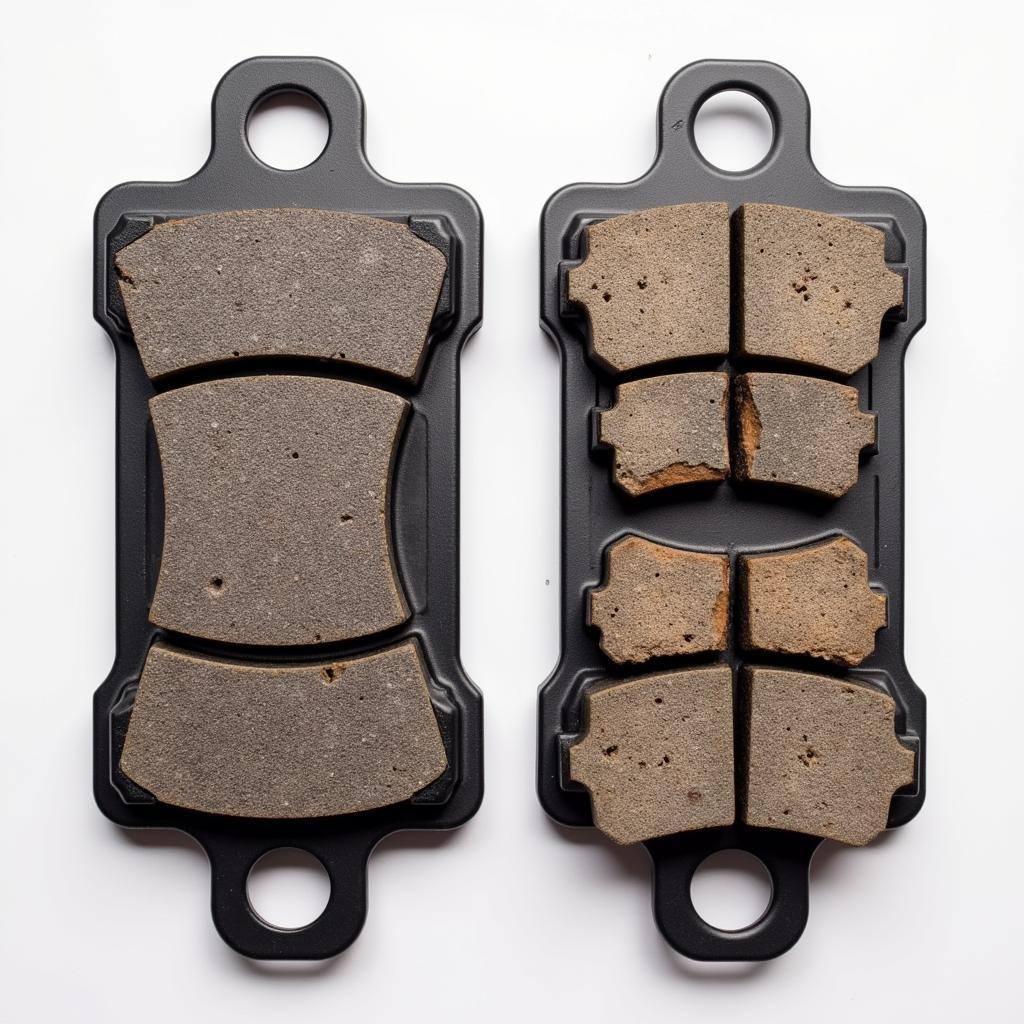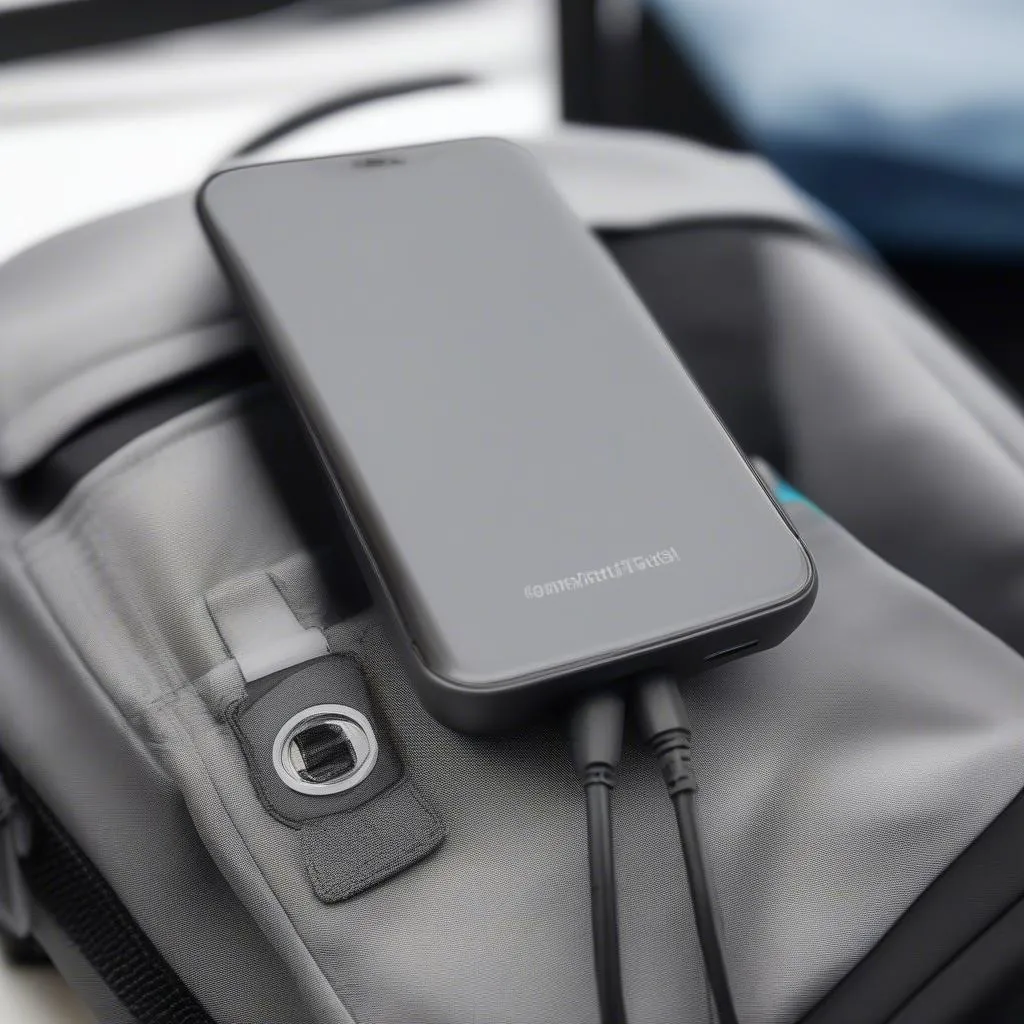The brake system warning light is one of the most important indicators on your dashboard. When illuminated, it signals a potential issue with your vehicle’s braking system that requires immediate attention. Ignoring this warning light can compromise your safety and others on the road. This comprehensive guide explores the common reasons behind a glowing brake system warning light and provides insights into diagnosis, troubleshooting, and necessary actions.
What Does the Brake Warning Light Mean?
The brake warning light, often symbolized by a circle with parentheses on either side and an exclamation mark (!) inside, can illuminate for various reasons, including:
- Engaged Parking Brake: One of the most frequent and least concerning reasons is an engaged parking brake. Always ensure your parking brake is fully released before driving.
- Low Brake Fluid Level: A more serious reason is low brake fluid, often indicating a leak in your braking system.
- Brake System Malfunction: The warning light can also signal a general malfunction within the brake system, such as a failing master cylinder, ABS issue, or worn-out brake pads.
Common Causes of Brake System Warning Light
Understanding the common causes of a brake system warning light is the first step towards a solution:
1. Low Brake Fluid
 Car Dashboard Showing Low Brake Fluid Level
Car Dashboard Showing Low Brake Fluid Level
Brake fluid is the lifeblood of your vehicle’s braking system, transmitting force from the brake pedal to the wheels. A leak in the system leads to a drop in brake fluid level, triggering the warning light.
Signs of a Brake Fluid Leak:
- A puddle of fluid under your vehicle, usually yellowish in color.
- A soft or spongy brake pedal feel.
- Brakes engaging lower than usual or requiring more pressure.
2. Worn Brake Pads
 Worn Brake Pads Triggering Warning Light
Worn Brake Pads Triggering Warning Light
Most modern vehicles are equipped with brake pad wear sensors. When the brake pads wear down to a certain level, these sensors contact the brake rotor, closing an electrical circuit and illuminating the warning light.
Signs of Worn Brake Pads:
- Squealing or screeching noise when braking.
- Grinding noise when braking.
- Vibration in the brake pedal when braking.
3. ABS Issues
 ABS Module Malfunction Triggering Brake Warning Light
ABS Module Malfunction Triggering Brake Warning Light
The Anti-lock Braking System (ABS) is crucial for maintaining steering control during hard braking. If there’s a malfunction within the ABS system, such as a faulty wheel speed sensor or a problem with the ABS control module, it can trigger the brake system warning light.
Signs of ABS Issues:
- ABS light illuminated alongside the brake warning light.
- Difficulty stopping the vehicle during hard braking.
- Unusual noises from the brakes, especially during ABS activation.
What To Do When Your Brake Warning Light Comes On
If your brake system warning light comes on, follow these steps:
- Safely Pull Over: Do not continue driving. Find a safe location to pull over immediately.
- Check the Parking Brake: Ensure your parking brake is fully released. If it was engaged, disengaging it might resolve the issue.
- Inspect Brake Fluid Level: If the parking brake isn’t the issue, carefully check the brake fluid level in the reservoir. If it’s low, adding brake fluid might temporarily resolve the issue, but it’s crucial to get your vehicle to a mechanic to diagnose and repair the leak.
- Avoid Driving Further: If the brake fluid level is extremely low, you notice a leak, or the warning light remains illuminated after checking the parking brake and brake fluid, do not attempt to drive further. Call a tow truck to transport your vehicle to a trusted mechanic.
Remote Diagnostics and Software Solutions
Advancements in automotive technology have paved the way for remote diagnostics and software solutions for certain brake system issues.
- Remote Diagnostics: Connecting your vehicle to a diagnostic tool, even remotely, can provide specific error codes related to the brake system issue, allowing for a more targeted repair approach.
- Software Updates: In some instances, a brake system warning light might be triggered due to software glitches. Reprogramming or updating the vehicle’s software with the latest versions can often resolve these issues.
It’s important to consult a qualified mechanic or dealership specializing in your vehicle’s make and model for remote diagnostics and software solutions.
Brake Warning Light: Frequently Asked Questions
Q1: Can I drive with the brake warning light on?
A: No, it’s unsafe to drive with the brake warning light illuminated. It indicates a potential issue with your braking system that could lead to brake failure.
Q2: How much does it cost to fix a brake system warning light issue?
A: The repair cost varies greatly depending on the underlying cause. A simple brake fluid top-up might cost a few dollars, while a complete brake system overhaul can cost hundreds or even thousands of dollars.
Q3: How often should I check my brake fluid?
A: It’s good practice to check your brake fluid level at least once a month and before long trips.
Q4: Can I add any type of brake fluid to my vehicle?
A: No, refer to your vehicle owner’s manual for the recommended type and DOT specification of brake fluid. Using the wrong type can damage your braking system.
Q5: Are there warning signs of brake problems other than the warning light?
A: Yes, other signs include a soft or spongy brake pedal, squealing or grinding brakes, pulling to one side when braking, and a burning smell coming from the brakes.
Conclusion
The brake system warning light is a crucial safety feature in your vehicle. Understanding its various meanings and potential causes allows you to take timely action and ensure your safety and the safety of others on the road. Regular vehicle maintenance, including brake inspections and fluid checks, can help prevent many brake system issues. Remember, a glowing brake warning light requires immediate attention from a qualified mechanic.

